Understanding the Tridosha Theory, Triguna in Ayurveda & How to Balance Them
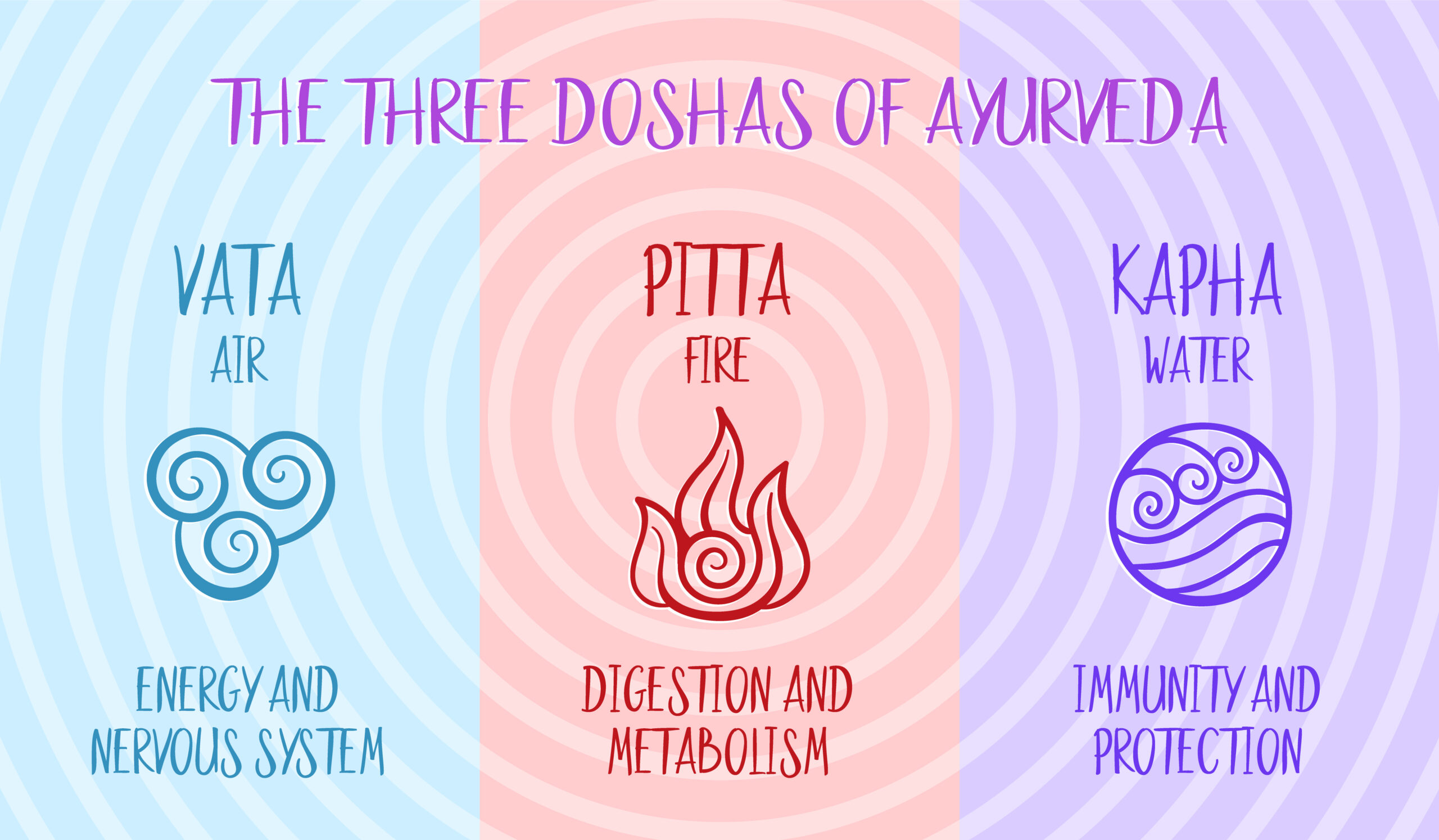
Ayurveda, a holistic science dating back over 5,000 years, seeks to restore balance between the body, mind, and spirit by understanding the natural energies that influence our health and personality. Central to Ayurveda are two profound concepts: the Tridosha Theory and the Triguna Theory. The Tridosha framework focuses on bodily energies, while the Triguna theory describes the qualities of the mind. Together, these principles offer a roadmap for achieving and maintaining balance, promoting both physical health and mental clarity. In this article, we’ll dive into the significance of the Tridosha and Triguna theories, their impact on well-being, and how to balance these energies in our lives.
Suggested Read: History Of Ayurveda: A Brief Overview (In Hindi)
The Tridosha Theory: The Foundation of Ayurveda
The Tridosha theory explains that three primary forces, or doshas—Vata, Pitta, and Kapha—govern our bodies. Each dosha is a blend of two elements, representing a unique energy that influences how we function physically, emotionally, and psychologically. An individual’s prakriti, or unique constitution, is shaped by the dominant dosha at birth. When these doshas are balanced, they contribute to optimal health, but any imbalance can lead to various ailments and diseases.
Vata Dosha (Air and Ether)
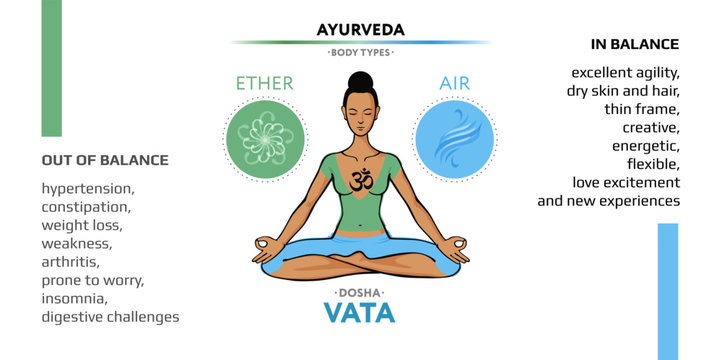
Characteristics: Vata dosha is associated with movement, and its qualities are light, dry, cold, and mobile. It governs bodily functions such as respiration, circulation, and the nervous system. People with a dominant Vata constitution tend to have a thin frame, dry skin, and an active, restless mind.
Mental Traits: Vata individuals are often creative, enthusiastic, and quick learners, but they may struggle with anxiety, nervousness, and overthinking when imbalanced.
Signs of Imbalance: Insomnia, dry skin, constipation, joint pain, and irregular digestion are typical indicators of a Vata imbalance.
Balancing Vata: To balance Vata, focus on grounding, warm, and nourishing routines. Eat warm, cooked foods with healthy fats, establish a consistent sleep schedule, and engage in calming activities like meditation and gentle yoga.
Pitta Dosha (Fire and Water)
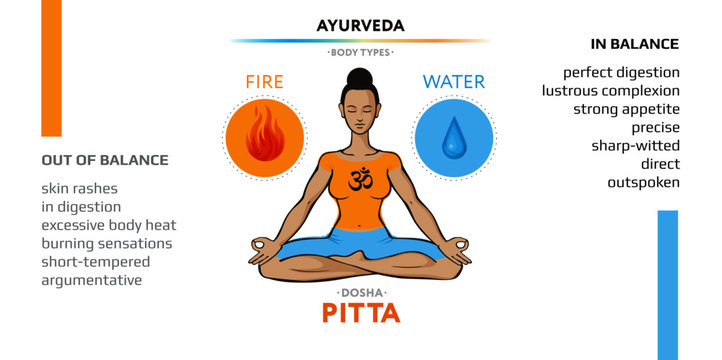
Characteristics: Pitta dosha represents heat and transformation, regulating digestion, metabolism, and body temperature. Its qualities are hot, sharp, oily, and intense. Pitta-dominant people generally have a medium build, warm skin, and sharp intellect.
Mental Traits: People with a strong Pitta constitution are often driven, confident, and goal-oriented but can become irritable, critical, and angry if imbalanced.
Signs of Imbalance: Skin rashes, acid reflux, inflammation, excessive sweating, and irritability are signs of Pitta imbalance.
Balancing Pitta: Cooling foods like cucumbers, melons, and leafy greens help balance Pitta. Avoid spicy foods, caffeine, and alcohol, and practice mindfulness techniques to soothe the mind.
Kapha Dosha (Earth and Water)
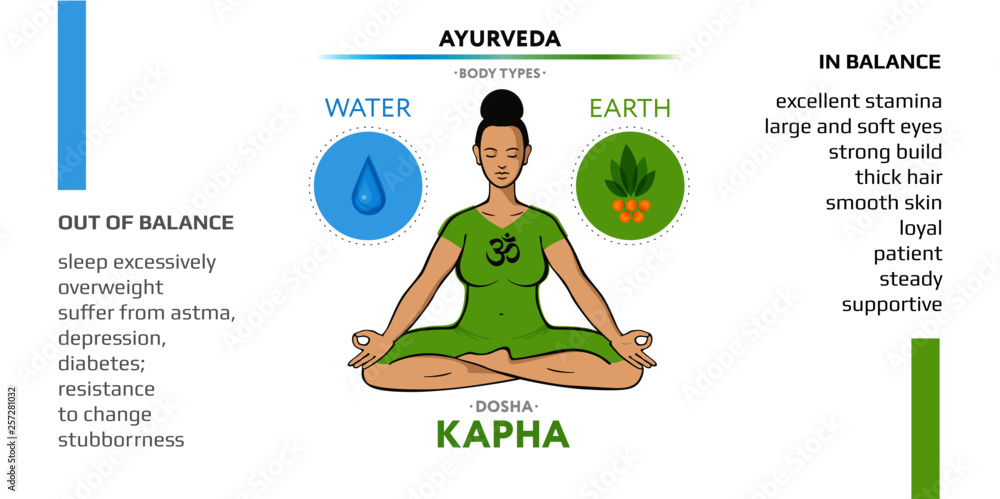
Characteristics: Kapha dosha is heavy, slow, steady, and moist, representing the energy of stability and structure. It governs immunity, lubrication, and growth, providing body structure and strength.
Mental Traits: Kapha individuals are calm, compassionate, and nurturing. They can, however, become lethargic, resistant to change, and possessive if their dosha becomes excessive.
Signs of Imbalance: Weight gain, congestion, sluggish digestion, and feelings of depression or attachment indicate a Kapha imbalance.
Balancing Kapha: Engage in physical activity and consume lighter, warming foods like ginger and chili to stimulate the Kapha energy. Avoid excessive dairy, heavy foods, and oversleeping.
Balancing the doshas involves recognizing one’s natural constitution and making conscious lifestyle and dietary choices to maintain equilibrium.
The Triguna Theory: The Three Qualities of the Mind
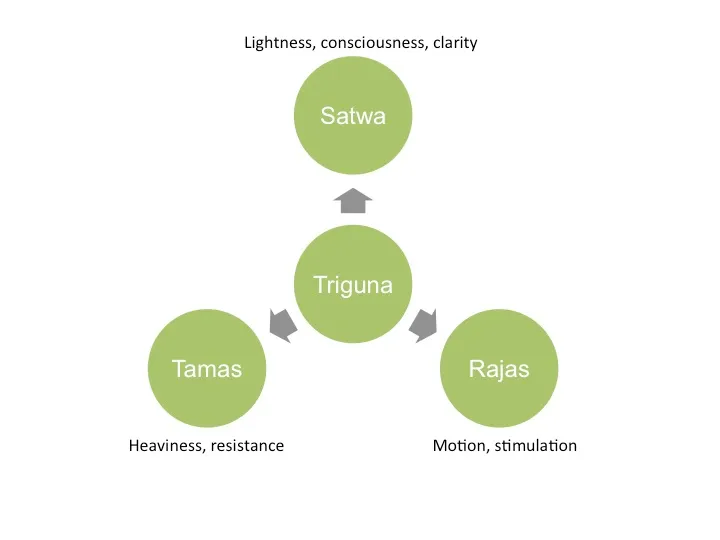
The Triguna theory in Ayurveda represents the three fundamental qualities, or gunas, that influence our mental and emotional state. The Gunas—Sattva, Rajas, and Tamas—are present in everyone, but their dominance can fluctuate based on lifestyle, environment, and life circumstances. Achieving a predominance of Sattva while keeping Rajas and Tamas balanced leads to mental clarity, stability, and peace.
Sattva (Harmony and Purity)

Characteristics: Sattva is the guna of harmony, clarity, and positivity. A Sattvic mind is calm, compassionate, and selfless, seeking knowledge, wisdom, and spiritual growth. People with a Sattvic mindset are inclined toward truth, morality, and higher consciousness.
Fostering Sattva: Incorporate meditation, practice mindfulness, and cultivate gratitude and compassion. Eating fresh, seasonal foods and maintaining a clean, organized space promote Sattva.
Rajas (Activity and Passion)

Characteristics: Rajas is associated with activity, ambition, and restlessness. Rajasic energy drives our desires, attachments, and pursuits. While Rajas is essential for motivation, too much of it can lead to hyperactivity, stress, and instability.
Signs of Excess Rajas: When Rajas dominate, it leads to heightened desires, emotional fluctuations, jealousy, and anxiety.
Balancing Rajas: Reduce overstimulation by limiting technology use, avoiding excessive caffeine, and prioritizing relaxation. Engaging in grounding activities like gardening or mindful walking helps stabilize Rajas.
Tamas (Inertia and Ignorance)
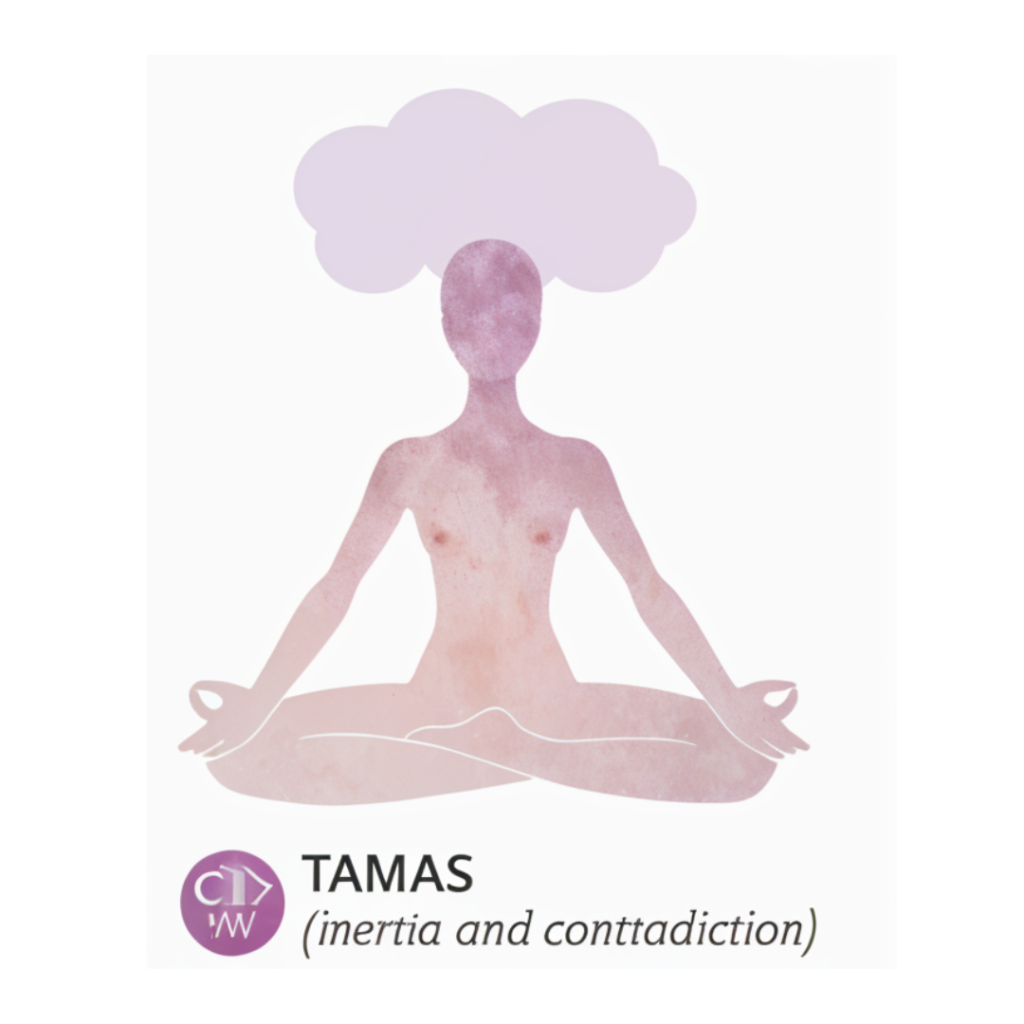
Characteristics: Tamas represents darkness, inertia, and resistance. It is necessary for rest and stability, but too much Tamas can lead to lethargy, ignorance, and depression.
Signs of Excess Tamas: Laziness, confusion, mental dullness, and chronic fatigue are symptoms of a Tamasic state.
Balancing Tamas: Cultivate lightness through regular exercise, exposure to sunlight, and a clean, organized environment. Avoiding overly processed and stale foods can reduce Tamas.
By fostering Sattva, reducing Rajas, and managing Tamas, we cultivate a balanced and harmonious mind, aligning our thoughts and actions with a higher purpose.
Integrating the Tridosha and Triguna in Daily Life
The key to Ayurvedic wellness lies in understanding that physical health and mental clarity are interconnected. Here are some practical ways to integrate the balance of doshas and gunas into everyday life.
1. Mindful Eating

Eating according to your dosha and favoring Sattvic foods promotes both physical and mental wellness. For example, warm, grounding foods with healthy fats benefit Vata, while cooling, fresh foods balance Pitta, and light, spicy foods reduce Kapha. Sattvic foods like fruits, vegetables, and grains also foster mental clarity.
2. Exercise and Movement

Physical activity is essential for balancing Kapha energy and managing Rajas in the mind. Tailor your exercise routine to your dosha—Vata types benefit from gentle yoga, Pitta types from moderate exercise, and Kapha types from more vigorous activities. Regular movement helps release Rajas and reduce Tamas, improving mental clarity and motivation.
3. Mindfulness Practices

Meditation, deep breathing, and mindfulness exercises increase Sattva by calming the mind and improving focus. These practices help manage anxiety (excess Vata), irritability (excess Pitta), and lethargy (excess Kapha). Engaging in regular mindfulness activities can help you recognize and release negative thought patterns associated with Rajas and Tamas.
4. Quality Sleep

Adequate rest is crucial for all doshas and balances Sattva by fostering a calm, clear mind. Overworking and overstimulation increase Rajas, while oversleeping can lead to Tamas. Aim for 7-8 hours of uninterrupted sleep, with a consistent sleep schedule to maintain optimal energy.
5. Environment and Lifestyle Choices

Surrounding yourself with positivity, decluttering, and spending time in nature encourage Sattva, while a chaotic or stagnant environment increases Rajas and Tamas. Clean and calm spaces promote mental clarity, supporting both physical and psychological balance.
Practical Tips for Balancing Each Dosha and Guna
Tips for Vata
- Diet: Favor warm, moist foods like soups and stews.
- Routine: Create a regular schedule, prioritizing sleep and relaxation.
- Activities: Practice grounding activities, like yoga and deep breathing.
- Mental Practices: Reduce multitasking, and focus on one activity at a time.
Tips for Pitta
- Diet: Eat cooling foods, avoiding spicy or acidic items.
- Routine: Schedule downtime, and avoid overworking.
- Activities: Engage in calming activities like swimming or walking in nature.
- Mental Practices: Practice patience and acceptance, and avoid overly competitive environments.
Tips for Kapha
- Diet: Favor light, warming foods with spices.
- Routine: Engage in physical activity daily, and avoid oversleeping.
- Activities: Try stimulating activities like hiking or dance.
- Mental Practices: Embrace change, and try new experiences.
Tips for Managing Gunas
- Cultivating Sattva: Prioritize cleanliness, practice gratitude, and engage in creative activities.
- Balancing Rajas: Limit stimulants, set clear boundaries, and practice relaxation techniques.
- Reducing Tamas: Keep active, avoid processed foods, and surround yourself with positive influences.
What is the relation between tridosha and triguna?
In Ayurveda, the Tridosha (Vata, Pitta, and Kapha) and Triguna (Sattva, Rajas, and Tamas) theories are interrelated, forming a holistic understanding of how both physical and mental energies impact health and wellness. While Tridosha governs the physical aspects of the body, Triguna governs the mental and emotional states. Together, they offer a Ayurveda’s holistic approach to health and wellbeing.
Here’s a closer look at their relationship:
- Mind-Body Connection: Tridoshas influence not only the physical body but also mental tendencies, as they are the mind’s vehicles. For instance:
- Vata is linked with movement and creativity in the mind, often associated with Rajas (activity and passion) but can also lead to excess Rajas when imbalanced, causing restlessness.
- Pitta relates to transformation and digestion in the body and is associated with drive and intensity in the mind. This often correlates with Rajas but, when balanced, can support Sattva (harmony and clarity).
- Kapha provides structure and stability, promoting mental calm and compassion. When balanced, Kapha aligns with Sattva, but in excess, it can lead to Tamas (inertia and dullness).
- Dosha Influence on Mental State: The dominance of a particular dosha affects one’s psychological makeup by influencing the predominant guna:
- Vata imbalance can increase mental restlessness and anxiety, leading to heightened Rajas.
- Pitta imbalance may trigger anger, frustration, and impatience, increasing Rajas and, potentially, Tamas if there is burnout.
- Kapha imbalance can cause mental sluggishness, attachment, and lethargy, resulting in an increase in Tamas.
- Achieving Balance: To achieve holistic wellness, Ayurveda emphasizes balancing both doshas and gunas:
- Cultivating Sattva is key, as it promotes clarity and calmness, which help balance both physical and mental states. Practices like meditation, mindful eating, and gratitude nurture Sattva and maintain balanced doshas.
- Reducing Rajas and Tamas when they become excessive supports mental peace and complements the balancing of doshas. For example, reducing Rajas can calm an overactive Vata or Pitta, while reducing Tamas helps lift the heaviness of Kapha.
In essence, while Tridosha deals with the physical constitution, Triguna deals with mental disposition. Together, they emphasize a holistic approach to achieving physical, mental, and spiritual balance. Balancing both ensures health and stability in both body and mind, aligning one’s lifestyle with natural harmony.
Conclusion: Embracing Balance in Life
The Tridosha and Triguna theories provide a comprehensive framework for understanding and balancing our bodies and minds. By recognizing the unique combination of doshas within us and the predominance of the gunas in our mental state, we can take targeted steps to promote physical well-being and mental clarity. Ayurveda teaches that balance is key—not only between our body’s energies but also between our emotions, thoughts, and actions. By aligning with the rhythms of nature, cultivating mindfulness, and making conscious lifestyle choices, we can harness the power of Ayurveda with Vedarma Ayurvedic Products to live a more harmonious and fulfilling life.




